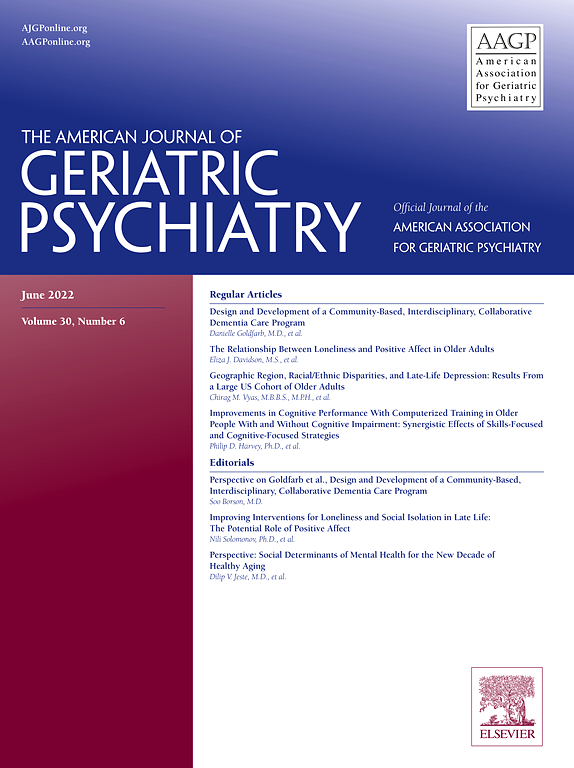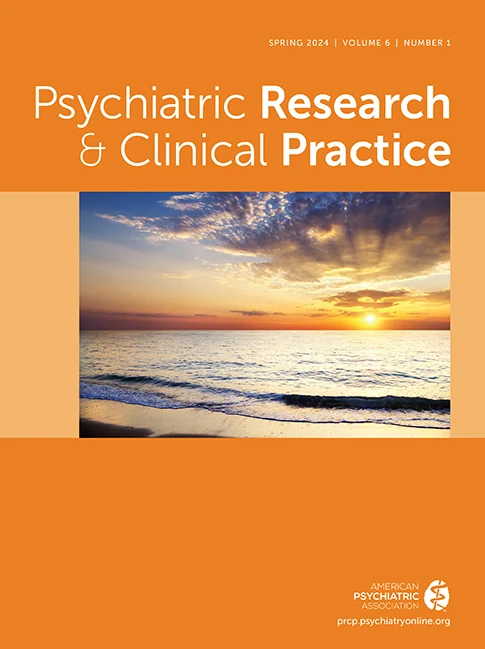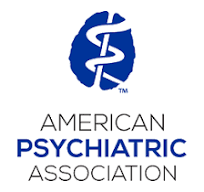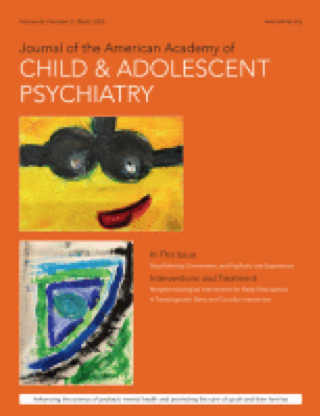IN THIS ISSUE: AI Systems | PMG | Emergency Medicine | Virtual Journal Club | How To Guides | A&E Abstracts

Authors: Michael Webber, MD, et al.
Abstract: The authors describe a model developed by two separate health care systems to deliver the anti-amyloid therapy, lecanemab, to patients with mild cognitive impairment and mild dementia—including the development of patient eligibility criteria, cooperation with specialty services, patient monitoring, and practical steps required for safe implementation. Geriatric psychiatrists, they say, will prospectively have a prominent role in prescribing and monitoring anti-amyloid therapies for memory care.
Importance: Alzheimer’s Disease is the most common cause of dementia worldwide, with an estimated 6.9 million Americans over 65 living with the condition. That number is expected to increase to 13.8 million by 2060 as the number of Americans of that age and above increases.
Lecanemab is a novel anti-amyloid therapy which presents new challenges for health system implementation and delivery. Given the multiple stakeholders involved and workup required for patient eligibility and clinical monitoring, significant investment is necessary.
Availability: Pre-publication in The American Journal of Geriatric Psychiatry.

Authors: Jules Evans, MA, et al.
Abstract: Thirty psychedelic researchers describe how to create a better psychedelic safety net.
They were asked to identify key critical research gaps around psychedelic harm and safety.
Gaps identified by the authors include defining the main types of psychedelic harm, the predictors of those harms, and the most effective way to treat them. They call for better support for those experiencing post‐psychedelic difficulties, including better online information, peer support groups, affordable therapy, and psychiatric consultation and medication. They also urge better funding to create a psychedelic safety net, and suggest psychedelic philanthropists, investors, and companies could commit 1% of their investment in psychedelics into supporting safety measures such as research and support services.
Preliminary evidence suggests that a minority (9%) of users of psychedelics in non‐clinical settings have experienced functional difficulties lasting longer than a day following the acute effects of the substances, say the authors. On some occasions, post‐psychedelic difficulties can endure for weeks, months or years.
These risks appear to be lower in clinical trials, possibly due to controlled conditions and screening for potential risk factors, but serious adverse events—some going unreported—can still occur in psychedelic clinical trials.
Although the risks of dependency and death (through accidents or toxicity) are substantially lower for classic psychedelic drugs than for many other psychotropic drugs, there are psychedelic‐specific risks that need to be better understood and communicated, say the authors. Given that psychedelics are typically co‐administered alongside psychotherapy or, at a minimum ‘psychological support’, adverse responses to treatment, and their interaction with drug effects, should be monitored.
Emerging data suggests several types of potential harms can potentially occur during and after psychedelic use. Harms that might persist beyond the acute stages of a psychedelic experience include:
“In addition, psychedelics can sometimes increase vulnerability to interpersonal harms such as negligence, exploitation, or boundary violations on the part of friends, therapists, facilitators, or other members of a psychedelic community,” say the authors. “Although we don’t yet have a clear picture of the prevalence of these harms, it is clear they can cause intense and sometimes enduring suffering. There is very little research on these and other types of harms, how often they occur, or what helps people cope with them. In addition, we need to learn more about risks unique to each individual psychedelic within various contexts.”
Importance: Rising numbers of people are taking psychedelic drugs for recreational and healing purposes. As their use increases in some countries, and national and local authorities consider legalizing or decriminalizing their access, it is important to learn more about psychedelic risks, communicate them more accurately, prevent them where possible, and support those who experience them.
Availability: Published by Psychiatry Research & Clinical Practice.

See also:
Prescribing Psychotropic Medicines for the Medically Ill
Authors: James Levenson, MD, FACLP, et al.
Abstract: Prescribing psychiatric medications for patients with chronic medical illness requires attention to multiple interacting variables and draws on the unique biopsychosocial expertise of the general psychiatrist in the community or the C-L psychiatrist in the hospital.
The authors discuss psychotropic prescribing for patients with a range of chronic medical conditions, as well as those in critical care or undergoing surgery or organ transplantation. Detailed guidance is given on pharmacokinetics, drug interactions, and severe reactions.
Importance: Comprehensive guidance on risks drug by drug is provided in this extensive analysis.
Availability: Published by the American Psychiatric Association.

Authors: Petra Caarls, et al, Department of Psychiatry, University Medical Center, Erasmus MC, Rotterdam.
Abstract: Data on the structure of medical psychiatric units (MPUs) in the US remains sparse. This study aims to inventory and analyze the structural characteristics of 20 US MPUs, categorizing them using Kathol’s and Van Schijndel’s frameworks, and identifying shared components to inform future MPU design and quality standards.
A telephone survey was conducted with 20 MPUs from 15 states. Units were categorized as Medical Attending MPUs, Psychiatric Attending MPUs, or Co-Attending MPUs, based on physician involvement. Characteristics assessed included medical and psychiatric acuity capabilities, staffing, physical design, and diagnostic services. Data was analyzed for shared and variable characteristics, and findings were compared with prior studies.
The authors found that most MPUs align with Kathol’s Type III, characterized by medium to high medical and psychiatric acuity capabilities. Shared characteristics include integrated nursing practices, 24/7 diagnostic availability, and access to ICU-level care. However, significant variation exists in location, staffing, and technical capabilities. Most units are Psychiatric Attending or Co-Attending MPUs.
Importance: This study provides a comprehensive inventory of US MPUs to date and proposes features to guide future MPU development and standardization.
Availability: Pre-publication in the Journal of the Academy of Consultation-Liaison Psychiatry (JACLP).

Authors: Renee Thompson, PhD, et al.
Abstract: Dramatic increases in rates of suicidal thoughts and behaviors (STBs) among youth highlight the need to pinpoint early risk factors. This study used longitudinal sampling to assess what the concurrent associations were between risk factors and STB status, how proximal changes in risk factors were related to STB status, and how risk factors prospectively predicted changes in STB status in a preadolescent sample enriched for early childhood psychopathology.
A total of 192 participants were included from the Parent-Child Interaction Therapy-Emotional Development Study of children with and without preschool depression. Participants aged 7 to 12 completed a diagnostic interview, followed by 12 months of intensive longitudinal sampling, assessing experiences of suicidal ideation and 11 psychosocial variables with known links to STBs in adolescents and adults. Preadolescents with STB history (high-risk) received surveys weekly, and those without STB history (lower-risk) received surveys monthly.
Female sex, elevated depressive symptoms, greater use of expressive suppression and rumination, emotional clarity, and perceived burdensomeness were uniquely concurrently associated with the likelihood of STB endorsement. Within the high-risk group, increases in depression, expressive suppression, rumination, and perceived burdensomeness, and decreases in positive affect week by week were associated with a higher likelihood of a positive STB status.
Higher expressive suppression, perceived burdensomeness, and caregiver criticism and conflict at the outset, compared to participants’ mean levels prospectively, predicted increases in the likelihood of a positive STB report.
“Psychosocial factors influencing STBs in adolescents and adults also affect preadolescents in day-to-day life,” say the authors. “Expressive suppression and perceived burdensomeness consistently emerged as novel risk indicators and potential targets for treatment. In addition, increases in depression, rumination, and caregiver criticism and conflict, as well as decreases in positive affect, might prompt heightened STB screening and assessments for preadolescents with a history of STBs.”
Importance: Large increases in STB rates among young people highlight the need to identify early risk factors in preadolescents.
Availability: Published by Child & Adolescent Psychiatry.

Authors: Pooja Sarkar, DO, et al.
Abstract: Alcohol withdrawal is frequently encountered in hospital settings, but the decision to treat the withdrawal with pharmacotherapy is often made without knowing if treatment is even necessary, say the authors. Testing for phosphatidylethanol (PEth), results of which correlate well with recent alcohol consumption, may allow hospital teams to avoid treating alcohol withdrawal unnecessarily.
To investigate PEth values of those suspected of alcohol withdrawal syndrome (AWS) among inpatients at two affiliated hospitals from January 2021 to April 2024, the authors conducted a retrospective study to determine the prevalence of hospitalized patients who received pharmacotherapy for withdrawal and who also demonstrated PEth values suggesting minimal recent drinking.
The cohort comprised 73 individual encounters. Among the 45 (62%) encounters where pharmacotherapy for AWS was administered, 14 (31%) had PEth values (≤200ng/ml) inconsistent with heavy alcohol use.
Importance: Results suggest that a substantial proportion of hospital inpatients may have received pharmacotherapy for AWS despite PEth levels inconsistent with recent heavy alcohol use. If PEth results are available in real-time, they could help clinicians decide if pharmacotherapy is warranted.
Availability: Pre-publication in the Journal of the Academy of Consultation-Liaison Psychiatry (JACLP).

You must be logged in to view this page
Please login below or register as a new user
Not an ACLP member? View Journal contents and abstracts here.
The Academy of Consultation-Liaison Psychiatry is a professional organization of physicians who provide psychiatric care to people with coexisting psychiatric and medical illnesses, both in hospitals and in primary care. Our specialty is called consultation-liaison psychiatry because we consult with patients and liaise with their other clinicians about their care.
With nearly 2,000 members, the Academy is the voice of consultation-liaison psychiatry in the US with international reach.
Please browse our website, read our journal, Psychosomatics, and come to our annual meeting which is in November each year. In 2020 it will be a virtual event – see www.CLP2020.org for more details.
If you are a C-L Psychiatrist and not yet a member please join our great organization and welcoming, inclusive community. Please visit this page for details on joining.
Michael Sharpe, MA, MD, FACLP
ACLP President
